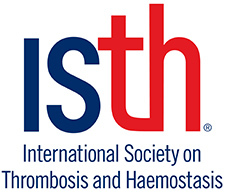Leading Thrombosis Specialists Issue Clinical Guidance on the Diagnosis, Prevention and Treatment of Venous Thromboembolism in Hospitalized Patients with COVID-19
Recommendation Includes Administering Treatment-Level Blood Thinning Medicine Upon Hospital Admission
CHAPEL HILL, N.C., May 27, 2020 /PRNewswire/ -- Leading thrombosis specialists from the International Society on Thrombosis and Haemostasis (ISTH) and World Thrombosis Day (WTD) Steering Committee recommend administering either standard preventative or larger doses of heparin (blood thinning medicine) to combat excessive clotting in all hospitalized COVID-19 patients from the time of hospital admission, unless they have contraindications to those medications.
This proposed "universal" intervention strategy is a change from the current practice of using only preventative levels of such medications after individual venous thromboembolism (VTE) risk assessment of hospitalized patients.
The recommendations are published in a new paper, titled "Clinical Guidance on the Diagnosis, Prevention and Treatment of Venous Thromboembolism in Hospitalized Patients with COVID-19," published on May 27, 2020 in the Journal of Thrombosis and Haemostasis (JTH). The peer-reviewed paper outlines new practical guidance on the prevention and treatment of VTE in hospitalized patients with COVID-19.
The recommendations were developed by a multidisciplinary panel of thrombosis experts as a response to widespread clinical reports of unusual, difficult-to-control clotting in COVID-19 patients. "Early reports suggest COVID-19 is one of the most thrombotic disease states we've ever seen," said lead author Alex Spyropoulos, M.D., member of the WTD Steering Committee. Co-authors include leading scientists from six countries (see below for list).
In issuing new guidance, the authors analyzed reports from colleagues around the world who observed that patients hospitalized with COVID-19 had a high incidence of thrombotic events (blood clots). The authors caution that the data are based on anecdotal reporting rather than rigorous scientific research. Thus, guidance may change as data improves, though the scientists generally agree the recommendations are sufficiently supported to be adopted into practice.
"We consider this a living document," Spyropoulos said. "This is a very fast-moving target. The data are important, but even more important is our need to take care of patients now. We see this correlation with clotting, and we must act."
"In the United Kingdom, we are seeing high rates of blood clots in our patients even as they receive standard doses of blood thinners," said Professor Beverley Hunt, M.D., OBE, WTD Steering Committee Chair. "These patients seem to need larger doses than other sick patients. We need to know the best doses going forward."
Additional research is in development in the UK at this time, via a clinical trial named REMAP-CAP, to capture the response of COVID-19 patients to different dosing levels of blood thinning medications. This will provide more guidance for healthcare professionals globally, Hunt said.
While much remains unknown, the authors have concluded that patients with severe cases of COVID-19 develop VTE at a much higher rate than severely ill patients in general. VTE is a condition in which blood clots form (most often) in the deep veins of the leg (known as deep vein thrombosis or DVT), and can travel in the circulation to lodge in the lungs (known as pulmonary embolism, or PE). The development of this condition in hospitalized COVID-19 patients results in a much higher risk of death, particularly in patients with preexisting cardiovascular disease.
COVID-19 patients in the intensive care unit (ICU) are three to six times more likely to experience DVT than a patient in ICU for some other reason, such as congestive heart failure.
The authors also noted that the clots exhibit particular characteristics. Clots that lead to cardiac events, such as heart attacks and strokes, are typically large. In COVID-19 patients, however, in addition to the usual large clots seen in these patients, smaller clots (microthrombi) are also present in the lungs.
Clinicians have not identified a specific cause of blood clotting in COVID-19 patients, but believe it is due to the extreme immune response to COVID-19 that causes very sticky blood. Early research on COVID-19 found that blood clots are playing a role in a significant percentage of all COVID-19 deaths in the United States. Patients in the United States, however, are not routinely given blood thinners, in contrast to patients in the United Kingdom.
For more information on the paper, "Clinical Guidance on the Diagnosis, Prevention and Treatment of Venous Thromboembolism in Hospitalized Patients with COVID-19," visit https://onlinelibrary.wiley.com/doi/abs/10.111/jth.14929.
Co-authors include: Jerrold H. Levy (United States), Walter Ageno (Italy), Jean Marie Connors (United States), Beverley J. Hunt (United Kingdom), Toshiaki Iba (Japan), Marcel Levi (United Kingdom), Charles Marc Samama (France), Jecko Thachil (United Kingdom), Dimitrios Giannis (United States), and James D. Douketis (Canada)
SOURCE International Society on Thrombosis and Haemostasis

Related Links
WANT YOUR COMPANY'S NEWS FEATURED ON PRNEWSWIRE.COM?
Newsrooms &
Influencers
Digital Media
Outlets
Journalists
Opted In





Share this article